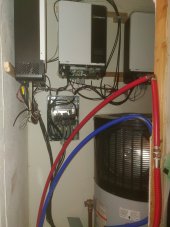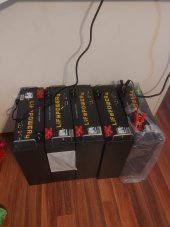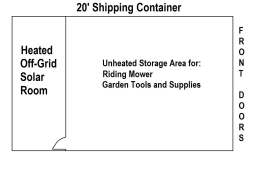Tony S
New Member
Hello Everyone,
My name is Tony and years ago my wife and I downsized our house.
We recently started talking seriously about getting off-grid and would like to be 100% off-grid with our setup - if at all possible.
I might be biting off more than I can chew.
Can you teach an old dog new tricks? Grin
FYI - I've been watching videos for months and reading what I can. But some of this is still a little over my head and that is why I'm here.
My hope is that we can get away with 12 panels or less.
(I've asked the MRS to get the last year or two of Hydro bills, so I can put all the info in a spreadsheet to see our usage during the S/F, S and W time frame.)
Everything in our house is electric except the oil boiler for heat, yet the circulating pump is electric, and the MRS does not want a gas stove and/or dyer.
I have grand hopes / ideas of having an adjustable array to get the most out of it - due to where we live.
I'm looking at either a Growatt or MPP inverter. (NOT sure if there are any issues with using either of them here in Ontario Canada?)
I'm leaning towards using GYLL LiFePOWER4 in a tower. (Unless someone out there shows me that we be better off going with something else.)
I already have a NEW shipping container or what they call a one-time use, that I plan to use for the entire setup.
My hope is to have the wires from the inverter run into the house to the current electrical panel.
WHY not have the setup in the house? Our house is too small to put the setup inside. We don't even have room for an inverter on the wall, much less the batteries.
(NOTE: I do plan to insulate and heat a small section of the container. Lets say 1/8 or less and it will have a sealed door inside to better control the temperature within that space.)
I also need to find out how cold the batteries can get and if I need to vent the room where everything will be installed from time to time?
However, what if the heating system goes down?
I need to have an understanding of how long I will have before I need to be concerned about the room getting too cold?
To know when I might have to shut the array down to protect the batteries?
FYI - I do plan to start a thread and post my ideas and progress as I move forward with this.
But for right now I need to learn and do my best to retain as much as I can. ( Grin - My age and 4 bad concussions don't help. LOL )
Thanks for your help and advice. I look forward to meeting you, learning, and sharing all I can.
God Bless
Sincerely, Tony
My name is Tony and years ago my wife and I downsized our house.
We recently started talking seriously about getting off-grid and would like to be 100% off-grid with our setup - if at all possible.
I might be biting off more than I can chew.
Can you teach an old dog new tricks? Grin
FYI - I've been watching videos for months and reading what I can. But some of this is still a little over my head and that is why I'm here.
My hope is that we can get away with 12 panels or less.
(I've asked the MRS to get the last year or two of Hydro bills, so I can put all the info in a spreadsheet to see our usage during the S/F, S and W time frame.)
Everything in our house is electric except the oil boiler for heat, yet the circulating pump is electric, and the MRS does not want a gas stove and/or dyer.
I have grand hopes / ideas of having an adjustable array to get the most out of it - due to where we live.
I'm looking at either a Growatt or MPP inverter. (NOT sure if there are any issues with using either of them here in Ontario Canada?)
I'm leaning towards using GYLL LiFePOWER4 in a tower. (Unless someone out there shows me that we be better off going with something else.)
I already have a NEW shipping container or what they call a one-time use, that I plan to use for the entire setup.
My hope is to have the wires from the inverter run into the house to the current electrical panel.
WHY not have the setup in the house? Our house is too small to put the setup inside. We don't even have room for an inverter on the wall, much less the batteries.
(NOTE: I do plan to insulate and heat a small section of the container. Lets say 1/8 or less and it will have a sealed door inside to better control the temperature within that space.)
I also need to find out how cold the batteries can get and if I need to vent the room where everything will be installed from time to time?
However, what if the heating system goes down?
I need to have an understanding of how long I will have before I need to be concerned about the room getting too cold?
To know when I might have to shut the array down to protect the batteries?
FYI - I do plan to start a thread and post my ideas and progress as I move forward with this.
But for right now I need to learn and do my best to retain as much as I can. ( Grin - My age and 4 bad concussions don't help. LOL )
Thanks for your help and advice. I look forward to meeting you, learning, and sharing all I can.
God Bless
Sincerely, Tony
Last edited:







![20220424_102908[1].jpg 20220424_102908[1].jpg](https://diysolarforum.com/data/attachments/92/92389-7c9d4e53f1bb57065db9912059a6cb1c.jpg)
